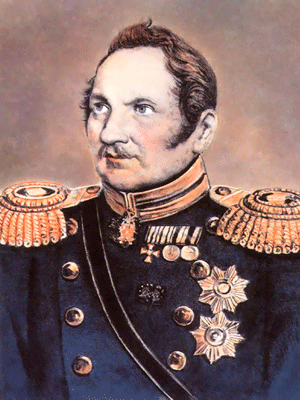News about maps
Digital cartography and GPS navigation
Mapstor news
This Day in History
Travelling with mapstor.com
This Day in History
4th December, 1674 Marquette founded the first European settlement
19th November, 1875 was born Hiram Bingham
18th November, 1832 was born Nils Adolf Erik Nordenskiöld
14th November, 1963 the island Surtsey was founded
11th November, 1729 was born Louis Antoine comte de Bougainville
9th September, 1778 Fabian Gottlieb Bellingshausen was born
 Fabian Gottlieb Bellingshausen was born on the 9th of September, 1778 on the Saaremaa Island. He is known as the discoverer of Antarctica.
Fabian Gottlieb Bellingshausen was born on the 9th of September, 1778 on the Saaremaa Island. He is known as the discoverer of Antarctica.
At the age of 10 he entered the Marine Corps in Kronstadt. In 1795 he was awarded the midshipman and immediately sailed off to the coast of England. In 1797 he received the first officer rank: was promoted to warrant officer and appointed to the Revel squadron. On the ships of this squadron Bellingshausen sailed up to 1803.
In 1803 there was a crucial time in the life of a sailor. That was the year when began the screening of sailors for of the first voyage of the Russian expedition headed by Ivan Krusenstern. Vice-Admiral Peter Ivanovich Khanykov, under whose command Fabian Gottlieb repeatedly went to sea, recommended him for appointment to the Bellingshausen ship "Hope". In 1803-1806 years Thaddeus went to Russia's first tour around the world on the sloop "Hope" under Krusenstern.
In the period 1812-1816 years he has personally headed the frigate "Minerva", and in 1817-1819 years - the ship "Flora". In June 1819 from Kronstadt started world South Polar Antarctic expedition under the command of the Bellingshausen. The expedition included two sloops - "East" and "Peace", the last headed by Mikhail Lazarev. In November, the expedition was already in Rio de Janeiro, where ships headed south, went around the south-west coast of the island of South Georgia, which had already appeared on the map thanks to the efforts of Cook. There Bellingshausen discovered three islands Marquis de Traverse, examined the South Sandwich Islands, sailed to the east, toward the south. Having reached 69° south latitude, in January 1820 he discovered Antarctica.
In February 1820 ships parted and went to Australia via the Indian and Southern Oceans. From there, the expedition headed for the Pacific, and discovered several atolls and islands, and then came to Australia in Sydney (formerly Port Jackson).
In November, 1820 ships again came to the South Polar Sea and visited Macquarie Island, south of New Zealand. Then the expedition sailed south, after moved to the east, and three times crossed the Arctic Circle. In January 1821 Fadei Gottlieb met solid ice and had to go to the north. Thus Peter I Island and Alexander I Island were mapped. In July 1821 sailors returned to Kronstadt. Thus ended a grand voyage, which lasted 751 days.
Bellingshausen contribution to the development of cartography and geography is really enormous. Thanks to his incredible efforts, the team investigated South Polar country. New islands appeared on geographical map.
Marine Department highly appreciated the results of the expedition, which lasted for more than two years. Having returned home Bellingshausen was awarded the rank of captain of the first rank, a couple of months later he became the captain commander, and later was promoted to admiral. He participated in the Russian-Turkish war, headed the division of the Baltic Fleet. Bellingshausen, despite his age, sailed until 1839. He died in 1952.
Of course, the memory of this remarkable man was immortalized on the maps. In honor of a legendary naval commander is named the island, bay, glacier, a cape on Sakhalin, a polar station in Antarctica. There is even a lunar crater named after him. If you carefully study the maps, you can also find the Bellingshausen Sea, which is located in the Pacific Ocean.
This Day in History 09-09-2012


